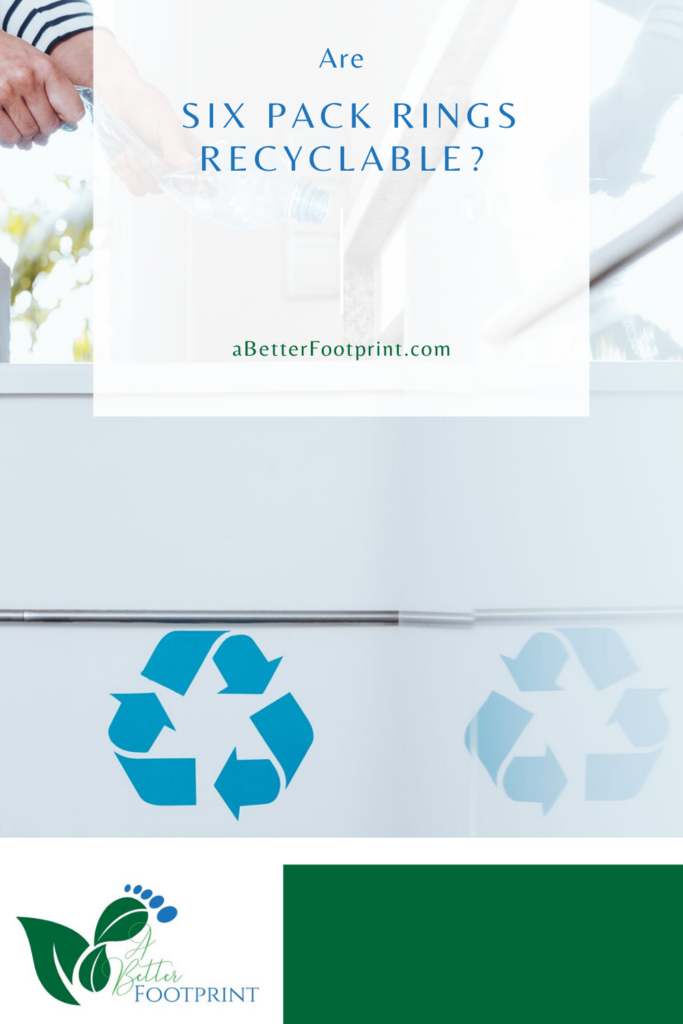Six pack rings, also referred to as six pack yokes, are a set of connected plastic rings used in multi packs of beverages, particularly six packs of beverage cans.
These rings are made from recyclable plastic called low-density polyethylene (LDPE). Despite being recyclable, six pack rings are still widely criticized due to the growing global warming crisis caused by plastic pollution.
Environmental impact and marine pollution
Reports show that as many as a million seabirds and 100,000 marine mammals lost their lives due to six pack rings being scattered in the oceans.
The number of animals dying due to plastic being all over the ocean paints six pack rings as a threat, despite its ability to be recycled. These rings can choke animals as it gets wrapped on their necks, and stay on their stomachs when they mistake it for food.
A few hours of coastal cleanup could result in 1,600 pieces of six pack rings, which only shows just how much it contributes to the plastic waste polluting the waters.
Like most plastic products, six pack rings are also made using petroleum, which only adds to the reasons it is considered harmful to the environment.
The rise of the six pack ring popularity
Manufacturer producers claim that the beverages packaging industry was transformed when a company called HiCone invented six pack rings.
In 1994, a mandate in the US required that all ring carriers sold in the US must be degradable. Manufacturers quickly followed suit, meeting the standard by making rings photodegradable. This feature means that these rings break down when exposed to light.
Photodegradation of six pack rings takes three to four month for the rings to break down in cloudy, winter-like conditions.
What six pack rings can do to the oceans
While this regulation makes it less likely for turtles and seahorses to be entangled in the rings, it raises the risks of marine animals consuming the smaller products formed as these rings break down.
These plastic fragments can turn into anywhere from tiny particles too small to see through our naked eye to pieces of several centimeters across.
700 species of marine animals are known to have been harmed by ocean plastic. Yearly, around 18 billion pounds of plastic flows into the ocean.
A whopping 40% of that is single use plastic, which comes as no surprise. Sea birds and mammals are both at risk not only from entanglement before the rings degrade, but also from possible ingestion of these small plastic particles that pose great health problems.
Because its harms are now notoriously known, six pack beverage rings are being discouraged.
The recyclability of six pack rings
Selected facilities, including supermarkets, are accepting six pack rings in a huge amount for recycling purposes.
Because six pack plastic rings are now made to be photodegradable, exposing them to sunlight over a long period of time will naturally break them down into small pieces. This means that compared to cigarette butts and other plastic waste, they are a smaller contributor to marine litter.
To reduce microplastics and carbon emission, alternative materials are now being used to make plastic rings. Several breweries have also announced that their six packs will now be made with compostable materials, and are now referred to as E6PR (Eco Six Pack Ring).
Designed to be completely compostable and edible, it is made with byproducts produced from brewing beer, like the remains of wheat and barley.
Repurposing six pack rings
Practically speaking, plastic six pack holder rings could be repurposed as tool organizers and mesh bags. You can also try using these rings in gardening and crafts. All you need is a little creativity and commitment.
Instead of simply discarding these without clipping the rings, try to put to good use and see how it could save your budget. This would make waste disposal more eco-friendly, and could even save you money in the long run.
Common questions about six pack rings
Are six pack rings biodegradable?
Due to the worsening problem of plastic pollution affecting marine life, more and more breweries have shifted to biodegradable and compostable 6 pack rings. Instead of using plastic, they are now making use of wheat and barley to make it more eco-friendly.
How many animals die from six pack rings?
Because it has been around for many years, studies show that at least 1 million seabirds and an additional 100,000 sea mammals have died because of six pack rings. The risks they pose to animals underwater include entanglement when they are thrown hastily without clipping, as well as ingestion when they get broken down into pieces after photodegradation.
How long does it take for plastic six pack rings to decompose?
Before the call for six pack rings to be more friendly to the environment, it took 450 years before they decompose.
Six pack rings contribute a huge amount to the problem on polluted marine ecosystems. The risks they pose on sea mammals are highly alarming, and could even be worse should we continue using them. This only shows that despite its recyclability, there are other ways we can do to make them better for the environment.


